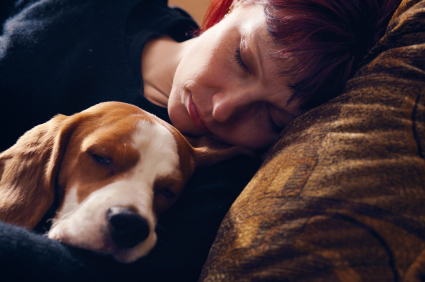Have you ever thought about how much really goes into a euthanasia appointment? If you really start to explore all the components that go into a good death experience, it’s no wonder euthanasia appointments are being scheduled for longer and longer time slots in the day’s calendar. There is a lot that goes into making the experience as gentle as possible for the pet, the family of caregivers, and the veterinary team.
Here is a list of the 14 essential components as laid out by the Companion Animal Euthanasia Training Academy (CAETA). These components serve as an educational framework for their entire euthanasia training program. Each component is rich with compassionate detail to minimize stress for the pet, provide emotional support for the caregiver, and streamline the actions of the veterinary team. The idea is for everyone providing euthanasia to ask themselves afterward, “Based on this list, did I deliver the best euthanasia possible?” If the answer is yes, they can feel confident they did provide a gentle death. If the answer is no, the team needs to review what was missed and what will be done differently next time.

G = Grief support materials provided
Examples: printed pet loss guides, pamphlets, or direct links to online resources
O = Outline caregiver and pet preferences
Examples: Talk about what’s important to the caregiver and pet. Match what they need.
O = Offer privacy before and after death
Examples: Make sure a family has time to be alone with their pet if requested
D = Deliver proper technique
Examples: Always use the most efficient and appropriate technique based on the pet’s health and available supplies
E = Establish rapport
Examples: Slow down and connect with caregiver and pet before proceeding
U = Use pre-euthanasia sedation or anesthesia
Examples: Pets do better when given medicines to help them sleep before euthanasia
T = Thorough, complete consent
Examples: Every euthanasia must be properly documented in records
H = Helpful and compassionate personnel
Examples: Engage staff to help who are naturally compassionate and care about how the euthanasia occurs. The use of a euthanasia attendant is strongly encouraged.
A = Adequate time
Examples: Slow down, block out enough time to complete all 14 components; it’s often more than we think we need (60 minutes is ideal)
N = Narrate the process
Examples: Describe what each step of the process looks like, being mindful to keep language simple and gentle.
A = Avoid pain and anxiety
Examples: Be gentle when handling the pet, use sedation whenever possible, and so slow to reduce anxiety
S = Safe space to gather
Examples: Consider using a quiet room in the hospital or performing the euthanasia at home where the pet is most comfortable
I = Inclusion of loved ones
Examples: Talk to caregivers about who they want to be there, including other household pets bonded to the pet being euthanized
A = Assistance with body care
Examples: Preplan with families around what’s important to them, carry out their wishes as if the pet were your own, or consider having the family work directly with the pet aftercare facility themselves.
The acronym above holds the phrase Good Euthanasia. Each letter represents one of the 14 essential components of the ideal companion animal euthanasia appointment. This list is to be used as a point of reference for veterinary teams working with caregivers and their pets during this important time. Another key consideration, not included in the list of procedural components, is the emotional health of the veterinary team. All involved personnel are encouraged to practice self-care before, during, and after every appointment.
The Companion Animal Euthanasia Training Academy provides outstanding education in companion animal euthanasia to improve the overall experience for the pet, caregiver, and veterinary team.

